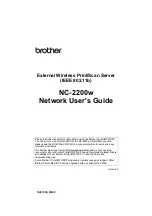
Intel® Server System SR1630BC
Introduction
Revision 1.3
Intel order number E44588-003
5
1.
Introduction
This Technical Product Specification (TPS) provides system specific information detailing the
features, functionality, and high level architecture of the Intel
®
Server System SR1630BC. You
should also reference the Intel
®
Server Board S5500BC Technical Product Specification more
details regarding the functionality and architecture specific to the integrated server board and
what is supported in this server system.
The Intel
®
Server System SR1630BC may contain design defects or errors known as errata
which may cause the product to deviate from published specifications. Refer to the
Intel
®
Server Board S5500BC/ Intel
®
Server System SR1630BC Specification Update for published
errata.
1.1
Chapter Outline
This document is divided into the following chapters:
Chapter 1 – Introduction
Chapter 2 – Product Overview
Chapter 3 – Power Sub-System
Chapter 4 – Cooling Sub-System
Chapter 5 – Peripheral and Drive Support
Chapter 6 – Front Control Panel
Chapter 7 – PCI Riser Card and Assembly
Chapter 8 – Environmental and Regulatory Specifications
Appendix A – Integration and Usage Tips
Appendix B – POST Code Diagnostic LED Decoder
Appendix C – Post Error Message and Handling
Glossary
Reference Documents
1.2
Server System Use Disclaimer
Intel
®
Server Systems support add-in peripherals and contain a number of high-density VLSI
and power delivery components that need adequate airflow to cool. Intel ensures through its
own chassis development and testing that when Intel server building blocks are used together,
the fully integrated system will meet the intended thermal requirements of supported
components. It is the responsibility of the system integrator who chooses not to use Intel
developed server building blocks to consult vendor datasheets and operating parameters to
determine the amount of air flow required for their specific application and environmental
conditions. Intel Corporation cannot be held responsible if components fail or the server system
does not operate correctly when used outside any of their published operating or non-operating
limits.







































